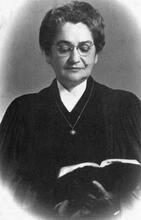Early Modern France
The Jews formed a tiny minority in France—perhaps two in one thousand by the end of the eighteenth century. But numbers alone are deceptive, for Jews did not live divided and dispersed throughout the land. Until the Revolution and their acceptance as citizens, most Jews lived in officially recognized autonomous communities in southwestern and northeastern France. Within these communities, they established charitable institutions, elected a governing body, defined the curriculum of their schools, registered their births, marriages, and deaths, and adjudicated cases in their own courts. Punishment of recalcitrant members of the community was left to the rabbis and syndics (lay leaders), and only rarely were the local authorities called upon to intervene in Jewish matters.
The Jews formed a tiny minority in France—perhaps two in one thousand by the end of the eighteenth century. But numbers alone are deceptive, for Jews did not live divided and dispersed throughout the land. Until the Revolution and their acceptance as citizens, most Jews lived in officially recognized autonomous communities in southwestern and northeastern France. Within these communities, they established charitable institutions, elected a governing body, defined the curriculum of their schools, registered their births, marriages, and deaths, and adjudicated cases in their own courts. Punishment of recalcitrant members of the community was left to the rabbis and syndics (lay leaders), and only rarely were the local authorities called upon to intervene in Jewish matters.
In early modern France, however, uniformity of laws, weights, or customs rarely extended beyond a small area. So, too, it was for the forty to fifty thousand Jews. For in spite of the similarity of the internal dynamics of their several communities, their daily lives differed radically from one to another. The most striking differences were those between the privileged Descendants of the Jews who lived in Spain and Portugal before the explusion of 1492; primarily Jews of N. Africa, Italy, the Middle East and the Balkans.Sephardim of Bordeaux and Bayonne, whose culture and religious traditions testified to an Iberian past, and the Jews of European origin and their descendants, including most of North and South American Jewry.Ashkenazim of Alsace, Metz, and Lorraine, whose centuries of cultural and linguistic development took place within small German towns and villages. The conditions, moreover, by which the Sephardim and Ashkenazim entered and remained in France served only to reinforce these differences.
Lives of French Women
As might be expected, little direct evidence exists concerning the lives of Jewish women, whether Sephardim or Ashkenazim. Indeed, there is only one woman, Glückel of Hameln, who speaks to us in her own voice. At the age of fifty-four, Glückel left Hamburg for Metz, one of the most important Jewish communities of Europe. There she married the wealthy and revered Hirsch Levy. In her riveting memoir, whose final chapters speak of her new life in France, she describes, with awe and discomfort, the finely dressed women of Metz and their opulent life style, including for a short time her own, with its servants, maids, laborers, and running footmen.
Although Glückel’s observations are corroborated by the numerous and detailed règlements from the community with their demanding sumptuary laws and exacting regulations of social behavior for young men and woman, they pertain to only a minority of the Jewish women of Metz. A more accurate picture of both the complexity and diversity of women’s lives emerges when obituaries and sentences by the Lit. "house of judgement." Jewish court of lawBet Din (Jewish court of law) are examined. Even these sources, however, often overlook minors, domestics, and the very poor.
In their obituaries, the Jewish women of Metz are praised for lending money to the poor, providing aid in commercial transactions, furnishing material to young couples to make appropriate clothes for their marriage, and offering those from the countryside a warm place to dine in the winter. Many are credited with dispensing free medical care and some with preparing the medicines themselves at their own expense. One such woman was Bella, who died at the age of one hundred, “alert and able to express herself in a clear and sound manner.”
The Jewish women of Metz also cared for and “cured” the very young, treating in particular those with diseases affecting the eyes. They provided tables, beds, wood, and books to impecunious students. Many worked to support their husbands, to free them to study “the divine words,” or “to assure an education for their sons.” Others peddled goods from morning to night to ensure they would not become a burden. A few, like Glückel, whose expertise in the commerce of precious stones was duly noted, were also described as learned (melumedet) in their own right.
Rulings from the Bet Din
Judgments by the Bet Din provide a window into the internal life of the Metz community, its daily problems, passions, and financial conflicts, including, of course, those of its female members. Young girls, for example, complained of feeling an “aversion” to the young men they were to wed. In one such case the Bet Din concluded that as long as the young girl swore that it was the intended who “disgusted” her and not that someone else had “inspired” her, then she was free to become engaged to whoever pleased her. In another case, the young man had not kept his promise to deliver his fiancée from her position as a servant. The Bet Din agreed to annul the engagement, hoping thereby to avoid a situation in which the servant either fell into “debauchery” or waited so long that she became an “old woman.”
The community also found itself confronting the problem of unwed mothers. Although the lay leadership dealt with a number of these cases, the most complicated found their way to the Bet Din. The pragmatism and equity of its judgments suggest that these cases were adjudicated on their individual merits rather than according to prepared responses. Sometimes, for example, if it determined that their conduct was found wanting, the Bet Din excommunicated the couple; other times the court excommunicated the young man, requiring that he either beg pardon from the girl and take her for his wife or provide her with sufficient funds to care for a family.
Young women were of course not the only ones to seek redress from the court. The daughter of Abraham Sintzheim, for example, had been separated from her “deceitful” husband for twenty years and had been reduced to borrowing to support her family. On the death of her husband, the money promised to her in her Marriage document (in Aramaic) dictating husband's personal and financial obligations to his wife.ketubbah (marriage contract) was not forthcoming. The court granted her the husband’s house as well as his place in the synagogue.
Conflict with the Bet Din
Not all women, however, found satisfaction within the community or from Jewish law. In 1710, all the members of the Metz community took a solemn pledge not to go before non-Jewish tribunals. They stipulated excommunication for those who transgressed this law. This pledge notwithstanding, many conflicts escaped the confines of the community and some even found their way to the Parlement, a sovereign court exercising jurisdiction over all civil and criminal matters for Metz, Toul, and Verdun. The most significant of these conflicts involved three cases each of which was instigated by a woman: Merlé, daughter of the wealthy Isaac Spire Lévy and wife of the unsuccessful Joseph Worms, who left a will depriving her husband of her property as well as guardianship of their children; Madeleine, recently betrothed daughter of the late Bernard Cahen, who demanded that her guardians, important lay leaders of the community, give her the substantial dowry to which she was entitled; and Rozette, widow of the banker Bernard Spire Lévy, whose wealthy husband had named her his legal heir. Rosette’s case subsequently elicited a decree from the Parlement (1759) denying the rabbi of Metz the right to excommunicate those who sought adjudication in the royal courts. Although aided by brothers, husbands, and friends, there is no doubt that these three women successfully asserted in eighteenth-century France a claim to legal personality, even independence.
The Jewish women of Metz not only played a significant role in sustaining the traditional institutions and culture of their community, but they were also affected by and participated in challenges to the autonomous existence of that community. In contrast to Metz, however, the other Jewish communities of France have left less evidence concerning the lives of their women. Along the winding and tortuous streets of right bank Paris, for example, one catches only glimpses of Jewish widows serving ritually prepared meals in tiny rooms or seeking out interpreters to aid them in their interactions with Parisian authorities. That these women’s lives remain elusive speaks little to their role, status or influence but rather to the paucity of archival material.
Primary
Archives from the Metz community can be found in New York City at the Jewish Theological Seminary and YIVO; in Cambridge, Massachusetts at the Houghton Library and in Metz at the Archives Départementales de la region de Lorraine et du département de la Moselle.
The Memoirs of Glückel of Hameln. Translated with notes by Marvin Lowenthal (1932) with new introduction by Robert S. Rosen. New York: Schocken, 1977.
Glickl: Memoirs 1691-1791, edited by Chava Turniansky, translated by Sara Friedman. Waltham, MA: Brandeis University Press, 2019.
Secondary
Kerner, Samuel. “Le règlement de la Communauté juive de Metz de 1769.” Annales de l’Est 24 (1973): 201–253.
Kerner, Samuel. “Deux Obituaires inédits de la Communauté Juive de Metz au XVIIIe Siècle” Koroth, 8: 9–10 (August 1984): 423–433.
Kerner, Samuel. “Les Registres Inédits des Tribunaux Rabbiniques de Metz (1771–1779) et de Niedernai (1755–1777).” Revue des Études juives 138: 3–4 (July–December 1979): 495–497.
Malino, Frances. “Competition and Confrontation: the Jews and the Parlement of Metz,” Les Juifs Au Regard De L’Histoire Mélanges en l’Honner de Bernhard Blumenkranz. Paris: Picard, 1985, 327–341.
Malino, Frances. “Resistance and Rebellion in Eighteenth-Century France.” Jewish Historical Studies Transactions of the Jewish Historical Society of England 30 (1987–1988): 55–70.

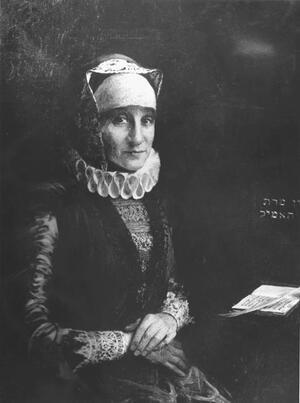

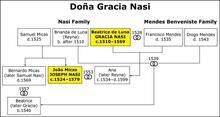
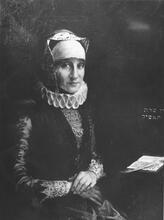
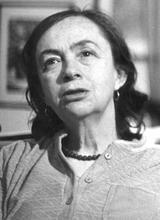

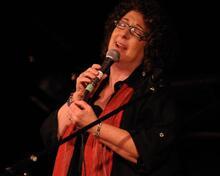
![blue.jpg - still image [media] blue.jpg - still image [media]](/sites/default/files/styles/medium/public/mediaobjects/blue.jpg?itok=RkdKmpf6)


